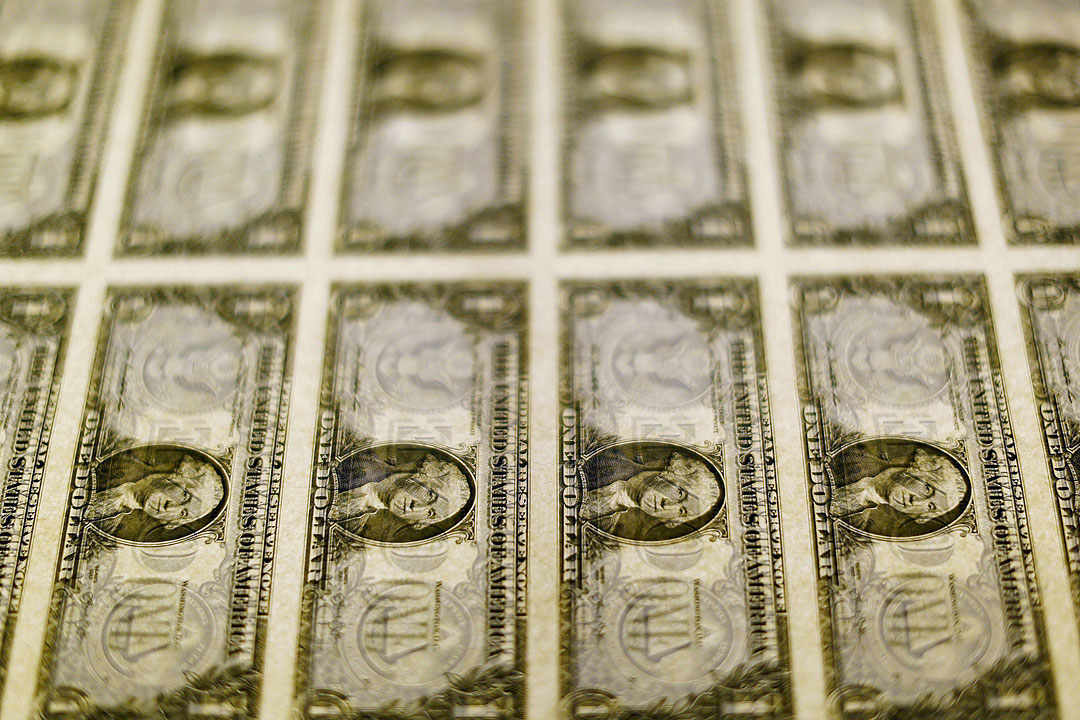Dollar reserves near $100B as of end-January

GROSS INTERNATIONAL RESERVES (GIR) rose to a six-month high as of end-January, as foreign currency deposits with the central bank included the proceeds from the Philippine government’s global bond issuance.
Preliminary data released by the Bangko Sentral ng Pilipinas (BSP) late on Tuesday showed the GIR increased by 3.7% to $99.7 billion in January, from the $96.1 billion as of end-December 2022. Year on year, dollar reserves fell by 7.4%.
This is the highest level of dollar reserves since the $99.84 billion posted in July 2022.
“The month-on-month increase in the GIR level reflected mainly the National Government’s (NG) net foreign currency deposits with the BSP, which include proceeds from its issuance of ROP (Republic of the Philippines) global bonds,” the central bank said in a statement.
Foreign currency deposits more than doubled to $2.11 billion as of end-January, from $942.8 million in the previous month and from the $831.7-million level a year ago.
The Marcos administration raised $3 billion from its second global bond issuance in January. The Bureau of the Treasury (BTr) sold $500 million worth of 5.5-year bonds, $1.25 billion worth of 10.5-year bonds, and $1.25 billion worth of 25-year sustainability bonds.
The central bank also attributed the higher GIR to “the upward valuation adjustments in the value of the BSP’s gold holdings due to the increase in the price of gold in the international market, and net income from the BSP’s investments abroad.”
As of end-January, the level of dollar reserves is enough to cover about six times the country’s short-term external debt based on original maturity and four times based on residual maturity.
It is also equivalent to 7.5 months’ worth of imports of goods and payments of services and primary income.
Ample foreign exchange buffers protect an economy from market volatility and ensure the country is able to pay its debts in the event of an economic downturn.
“The BSP continues to rebuild its GIR, (and it’s) now close to $100 billion. Although most of the increase was due to the ROP issuance and valuation, the BSP may have also been able to rebuild its buffer stock via foreign exchange operations,” ING Bank N.V. Manila Senior Economist Nicholas Antonio T. Mapa said in an e-mail.
In a note, Rizal Commercial Banking Corp. Chief Economist Michael L. Ricafort said the GIR may have also picked up in January after the seasonal increase in US dollar and foreign currency inflows. He noted the higher holiday-related spending in December may have continued into the new year.
According to the BSP, net international reserves increased by $3.6 billion or 3.7% to $99.7 billion as of end-January 2022 from $96.1 billion a month prior.
Net international reserves are the difference between the BSP’s reserve assets (GIR) and reserve liabilities such as short-term foreign debt, and credit and loans from the International Monetary Fund (IMF).
Broken down, the central bank’s foreign investments reached $83.25 billion, up by 2.3% from the $81.37 billion in the previous month. Year on year, foreign investments slumped by 10.4%.
The country’s reserve position in the IMF inched up 0.9% to $797.3 million as of end-January from $789.8 million in the prior month. Year on year, it slipped by 0.4%.
Reserves in the form of gold were valued at $9.80 billion as of end-January, up by 5.6% from the $9.28 billion as of end-December 2022 and up by 6.8% from the $9.18-billion level a year earlier.
Special drawing rights — or the amount the country can tap from the IMF — was unchanged at $3.764 billion for the second straight month. However, it was 4.3% lower year on year.
“BSP has displayed that it was able to weather the 2022 storm with the bulk of its GIR intact as the cache of foreign reserves was able to help allay concerns about dollar liquidity at the height of financial market stress,” Mr. Mapa said.
The BSP intervenes in the foreign exchange market to smoothen volatility.
Mr. Mapa said he expects GIR to inch up in the next few months “on expectations for a mild appreciation trend for the peso.”
Mr. Ricafort said GIR growth could be supported by rising remittances, business processing outsourcing revenues, exports, as well as a fast recovery in foreign tourism.
The BSP projects the GIR level at $93 billion by end-2023. — Keisha B. Ta-asan
